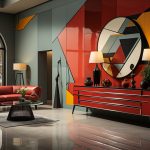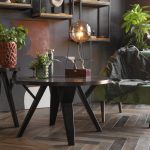Knowing your Home Interior Design Basics can be really useful in finding out reference projects or communicating your needs and wants with your interior designer. This is why we came up with this quick guide on the various types of styles that you can choose the next time you choose to renovate your BTO, condo, HDB or any project you have in mind.
So let’s get started on the Home Interior Design Basics that you will need to know!
Minimalist Interior Design
Minimalist interior design is characterized by its emphasis on functionality and practicality. The layout of a minimalist space is carefully organized to optimize movement and usability. Unnecessary items and excess ornamentation are intentionally eliminated, allowing the space to feel clean and efficient. This intentional simplicity not only creates a visually appealing environment but also promotes a sense of calm and clarity.
One of the key elements of minimalist design is the abundant use of natural light. Large windows, skylights, and glass doors are incorporated to maximize daylight and create a bright and airy atmosphere. This connection to the outdoors helps to blur the boundaries between indoor and outdoor spaces, fostering a sense of harmony with nature.
Minimalist interior design also encourages mindfulness and intentionality in daily life. By eliminating distractions and excess belongings, minimalist spaces can create a serene backdrop for relaxation, focus, and introspection. The minimalist philosophy extends beyond just the physical space and can influence a more mindful and simplified lifestyle.
Scandinavian Interior Design
The importance of natural light is a key element in Scandinavian design. Large windows are utilized to maximize the amount of daylight, creating a sense of openness and spaciousness. This emphasis on natural light is especially significant in the Nordic countries, where long, dark winters are common. By bringing in as much natural light as possible, Scandinavian interiors feel welcoming and rejuvenating.
Scandinavian design also values the use of natural materials and textures. Wood, in particular, is a prominent element, often showcased in furniture, flooring, and architectural features. These materials add warmth and create a cozy atmosphere. Additionally, Scandinavian design incorporates elements of nature, such as indoor plants, to enhance the connection between the interior space and the natural world. This combination of natural materials and nature-inspired elements contributes to the overall sense of tranquility and well-being associated with Scandinavian interior design.
Industrial Interior Design
In addition to raw and utilitarian elements, industrial interior design often incorporates a mix of textures and materials. Alongside the prominent use of metal, elements like reclaimed wood, leather, and exposed concrete contribute to the overall aesthetic. These materials add depth, warmth, and contrast to the space, balancing out the industrial elements.
Industrial design also embraces the concept of repurposing and upcycling. Salvaged or vintage items are commonly used as statement pieces, such as repurposed factory carts transformed into coffee tables or old gears turned into wall art. This approach not only adds character and uniqueness to the space but also promotes sustainability and environmental consciousness.
To complement the industrial ambiance, the lighting in industrial interiors is often a standout feature. Large, industrial-style pendant lights, exposed bulbs, and track lighting are popular choices. These lighting fixtures not only provide functional illumination but also serve as decorative elements, adding an extra touch of industrial flair.
Mid-Century Modern interior design
In addition to furniture, Mid-Century Modern design incorporates architectural elements such as large windows, open floor plans, and the use of natural materials like wood paneling and exposed beams. The style emphasizes a connection to the outdoors and seeks to bring nature inside through ample natural light and views of the surrounding environment.
Mid-Century Modern interiors are known for their warm and earthy color palettes. Rich, warm tones like olive green, mustard yellow, and burnt orange are commonly used, complemented by neutrals like white, beige, and gray. These colors contribute to the inviting and cozy atmosphere of the space.
The Mid-Century Modern design values simplicity and functionality. This style favors uncluttered spaces, allowing each element to stand out and make a statement. It embraces a minimalist approach while incorporating pops of color, pattern, and texture for visual interest.
Contemporary Interior Design
Contemporary interior design is a reflection of the present era, embracing simplicity, functionality, and a clean aesthetic. It features clean lines and a minimalist approach that avoids excessive ornamentation and clutter. Furniture and architectural elements are characterized by sleek profiles and smooth surfaces, often incorporating geometric shapes and forms. The emphasis is on creating a sense of order and sophistication.
In terms of color, contemporary interiors tend to favor neutral palettes as a base, including shades of white, gray, and beige. This neutral backdrop allows for versatility and timelessness while providing a soothing atmosphere. To inject personality and visual interest, bold accents in the form of vibrant colors or striking patterns are introduced through accessories, artwork, or statement furniture pieces.
Contemporary design values open and functional spaces that promote a sense of spaciousness and connectivity. Open floor plans are often favored, allowing for seamless transitions between different areas of the home. Furniture choices are made with practicality in mind, incorporating hidden storage solutions or multifunctional designs to maximize space efficiency. The focus is on creating environments that accommodate modern lifestyles and support the needs of the occupants.
Integrating technology is another hallmark of contemporary interior design. From built-in entertainment systems to smart home automation, technology is seamlessly integrated into the space. This integration is done in a discreet manner to maintain the clean and uncluttered aesthetic that defines contemporary design. The goal is to enhance functionality and convenience without compromising the overall visual appeal.
In contemporary interiors, natural light takes center stage. Large windows, skylights, and glass doors are employed to maximize the presence of natural light, creating a bright and airy atmosphere. This emphasis on natural light not only enhances the overall aesthetics of the space but also contributes to the well-being of its occupants, promoting a sense of openness and connection to the outdoors.
The interplay of materials and textures adds depth and visual interest to contemporary design. A combination of smooth and textured surfaces can be found, incorporating materials such as polished wood, glass, metal, and natural stone. The juxtaposition of these different elements creates a dynamic and visually appealing environment.
Contemporary design also embraces individual expression and personalization. Eclectic touches, such as blending modern and traditional elements, incorporating unique artwork, or showcasing personal collections, are often welcomed. This allows homeowners to infuse their spaces with their own personalities and tastes, creating a sense of uniqueness and character.





